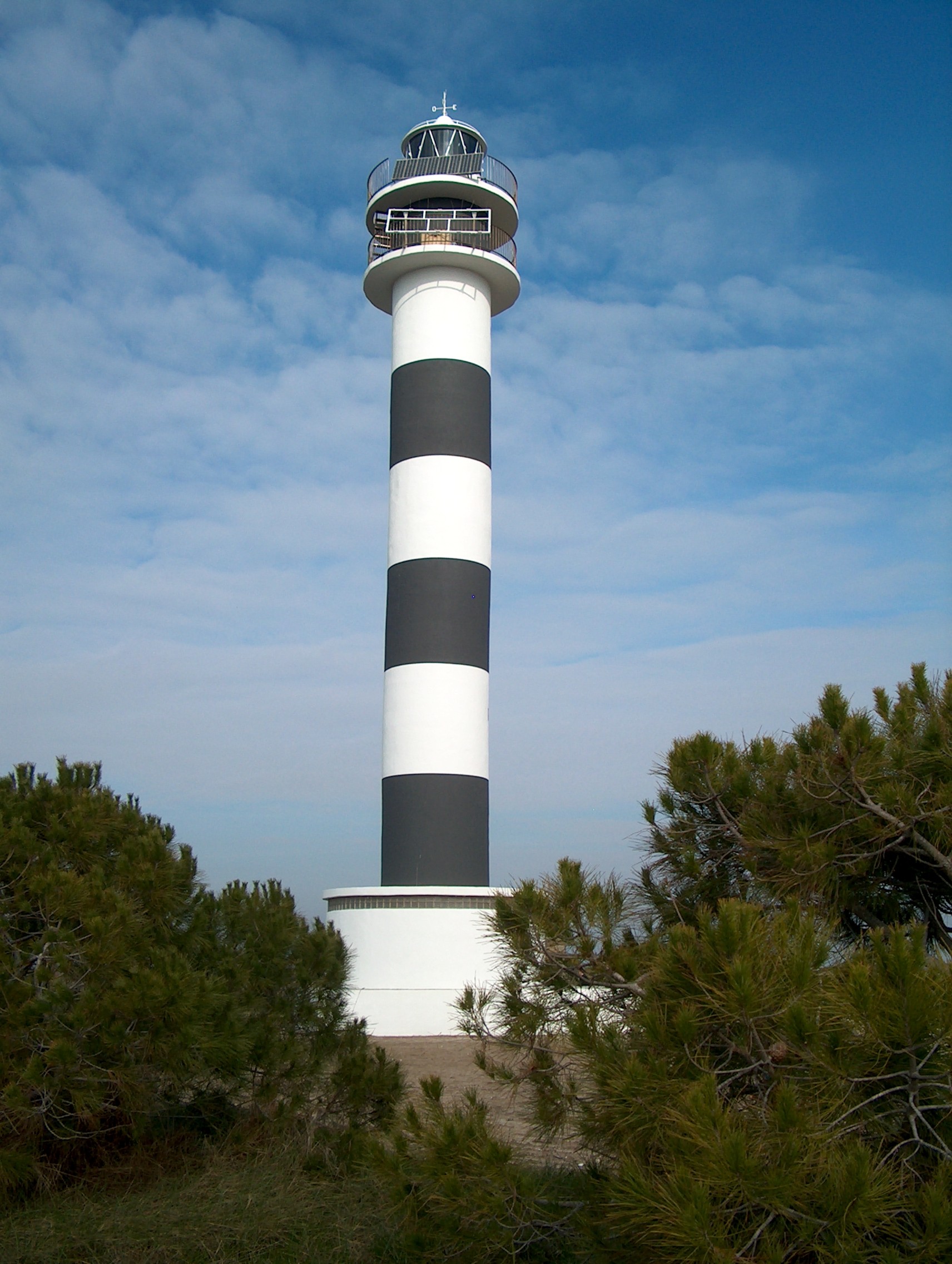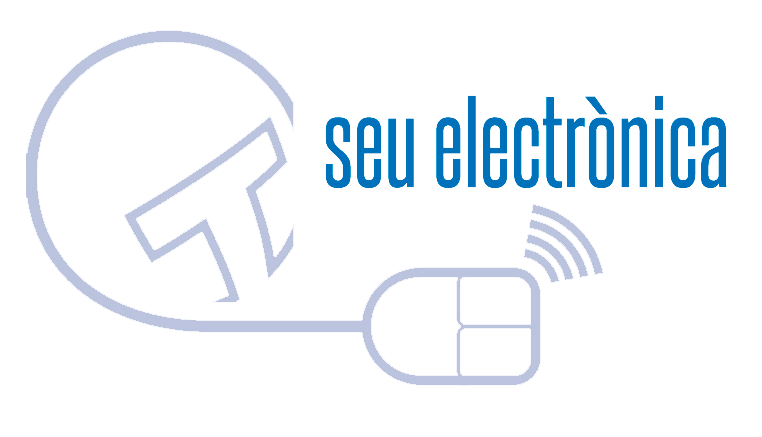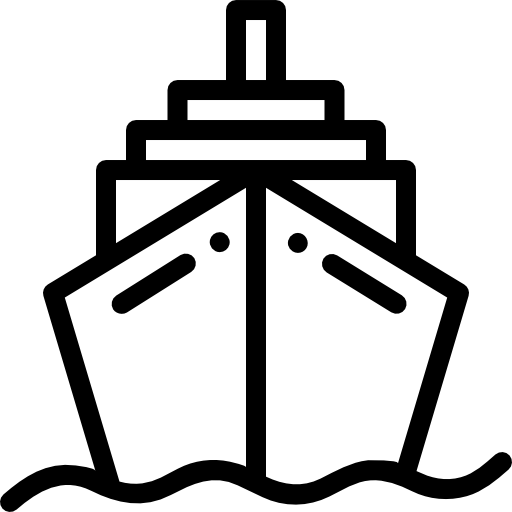The story of this lighthouse is a continuation of the story of Banya Lighthouse, which was moved from its location and relocated to the Levante Dock of the Port of Tarragona (see its story). The need to progress from the old fashioned and the inability to recreate the tower forced the design of a new taller lighthouse.
Building began in 1975 taking its inspiration from a design for a standardised reinforced concrete tower, 23.7m high and 3m in diameter, painted in black and white stripes.
Within it was placed an old fashioned 3rd order optical unit, 750mm in diameter, purchased in 1862 from the English Chance Brothers company and that came from the old lighthouse and used the same acetylene light system it already had.
The design of these towers was realised in April 1970 by the Commission for the Study of Models and Methods for Maritime Signals, with the aim of facilitating the projects for new lighthouses that were at a standstill due to the low priority placed on these works by the engineers. This gave rise to continuous delays in the modernisation and improvement of the Spanish maritime signalling system. Under the title “The Project for Official Models of Lighthouse Towers” three models were proposed of cylindrical towers with diameters of 3, 4 and 5 m respectively, allowing for the necessary height of the focal plane over the land.
With a lower concentric body and a diameter wider than the tower, designed to house the acetylene gas batteries. In the upper part there were two exterior, overhanging balconies. The highest part was accessible from the lower level in order to clean and maintain the exterior of a 1750 mm diameter cylindrical lamp, helicoidal mountings and curved glass purchased at the MAQUINISTA VALENCIANA.
It entered service on 1st November 1978 on the same day as the old iron one was turned off.
Taking advantage of the building works, the remnants of the inspection cabin and the storage hut were demolished and the land that they had occupied was closed in using a lattice fence.
The difficulties in the moving and the charging of the gas batteries and the development of photoelectric energy systems, lead to the decision in 1985 to install electricity.
Two white flashing lights with a nominal range of 12 miles were as a result of this. The energy needed to power the light came from 8 Holec 40W photoelectric panels capable of achieving 26.25 ah/d at 24V that powered a group of batteries formed by 12 stationary TUDOR EAN100 cells with a capacity of 2 V and 708 A/H.
Four incandescent 150W / 24V bulbs of the multifilament operating theatre kind were installed, on a CDL-24 automatic changer from Maquinista Valenciana and a double signal light from the same manufacturer.
Shortly after the signal light was replaced by a newer model from the same company similar to the ones found at the Fangar lighthouse, at the Levante Dock lighthouse at the Port of Tarragona and at the old Banya lighthouse found at said port. The bulbs were also replaced by 150W 24V bulbs with a higher luminosity. A new sprung changer replaced the old one, purchased at the Spanish Balizamar company.
As with the other lighthouses in the province in September 1988 the first Spanish project for the remote supervision of lighthouses was completed in Tarragona. The installation was the responsibility of the Hispano Radio Marítima company. Its control centre was in the Sant Carles de la Ràpita lighthouse with which it communicated by radio.
The equipment was made up of various sensors that captured the system check signals (the running of the light, the state of the batteries, break ins, etc.) that were sent to a computer and a radio modem. It was powered by six 40W Holec photoelectric panels, twelve stationary Tudor 2V batteries and an ATERSA charge regulator.
Results were not good due to its high consumption, however the experience served as the basis for another more modern system that was introduced countrywide and that began working in Tarragona on 4th April 1998. Incidents are transmitted to the lighthouse at Sant Carles de la Ràpita and from there by telephone to the Port Control Building, situated at the Port of Tarragona, where the control centre for the province is.
The Banya lighthouse is found at the beginning of the small Alfaques, in the southern part of the Ebro Delta. This forms a natural barrier along with the Trabucador beach which has resulted in the natural port of the Alfaques, where the town and the port of Sant Carles de la Ràpita are found.
It is located in an area of great environmental interest, declared a protected Natural Park thanks to its special bird breeding habitat, especially that of the Andouin seagull which, in the Spring, forms one of the biggest known colonies. The tower is used as an observatory by the natural park and by the biology department of the autonomous government of Catalonia for the counting and tracking of the birds and other animals that naturally breed there.
An all terrain vehicle in needed to reach it and to cross the large neck of sand formed by the Trabucador beach. There are some important salt works nearby. As a consequence of storms the area sometimes floods making access impossible.
When this happens it is necessary to take a boat from the neighbouring port of Sant Carles de la Ràpita.























